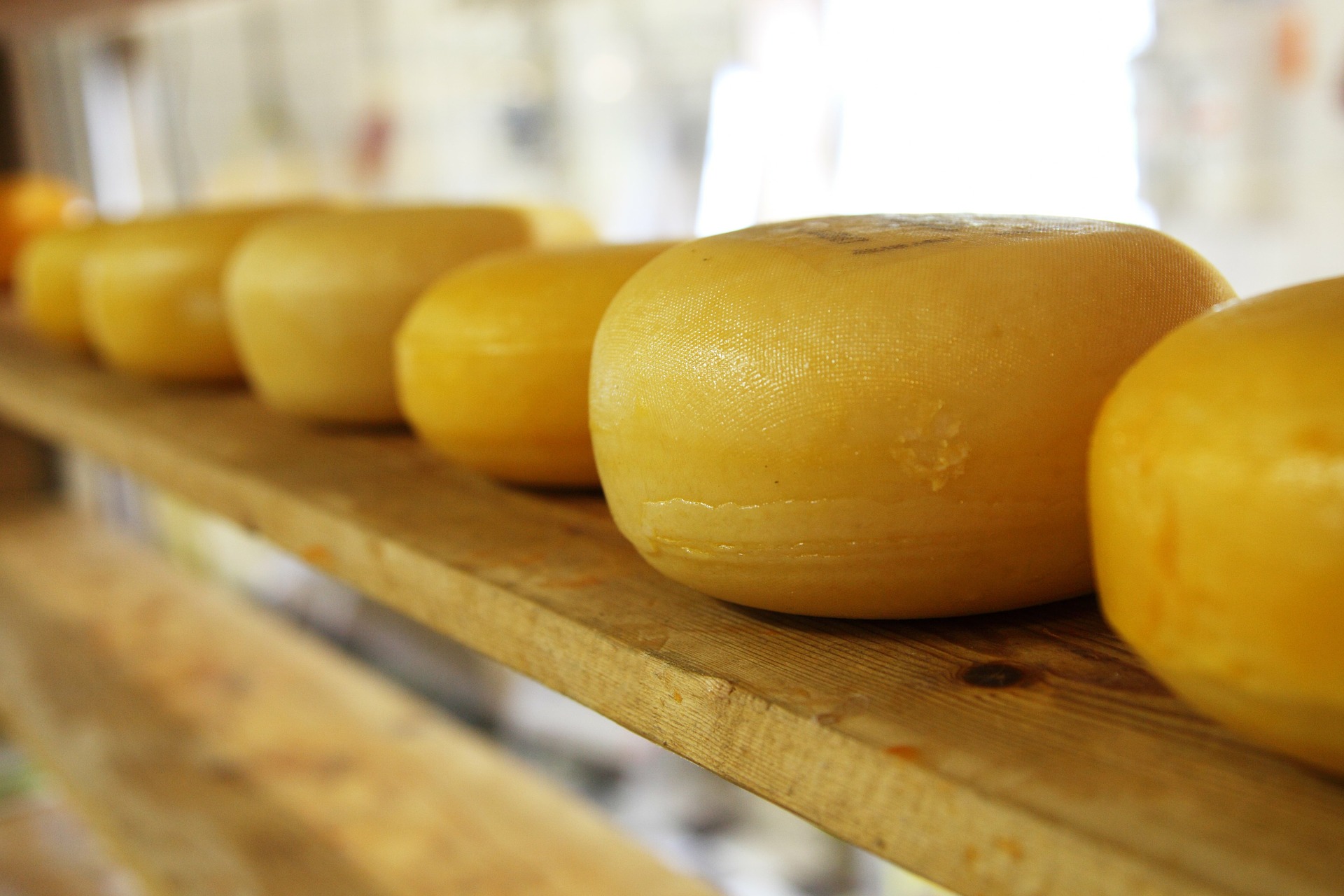Thousands of years ago when milk producing animals were first domesticated, humans realised that milk had a natural tendency to separate into curds and whey and that the curds could be used to produce cheese.
By the time of the Roman Empire, cheesemaking had become a popular, highly valued process throughout Europe and the Middle East.
Many cheeses are made from cows’ milk, but goat and ewe’s milk have also become popular over the years.
Let’s Talk More Cheese ….
The cheese making process involves many main stages:
Preparing the cheese milk – high quality cheese can only be made using the best milk and it takes
approximately ten litres of milk to produce 1kg of hard cheese – so it’s
important that the milk is rich, full of flavour and creamy.
Depending on preference, milk is either pasteurised or left raw
(unpasteurised):
- Non pasteurised cheese milk contains the necessary bacteria to produce lactic acid that triggers curdling.
- Pasteurised cheese milk requires a culture of bacteria to produce this lactic acid.
Separating the curds from the whey (I feel a nursery rhyme coming on) : Animal or vegetable rennet is added to cheese milk that causes the milk to coagulate producing curd. The remaining liquid is whey. You can speed up the separation in a variety of ways:
- Cutting the curd,
- Stirring the curd,
- Heating the curd.
Finally, the curd is put into moulds
and placed on draining boards and once in the moulds, the curd can be pressed.
The Ageing Process – Cheese needs to be stored in a suitable room at the required temperature and humidity in order to age (mature). There are some cheeses that only age for a month, whereas others can age for years! This allows them to form a rind whilst in their moulds and take on new flavours.
Importance of Temperature and Humidity
Caves were often a popular place to age cheese as they had a stable temperature and humidity, but nowadays environmentally controlled rooms are used. During the maturing process, moisture must be removed from the cheese. This moisture will move from the cheese to the air (equilibration): the air in the room or chamber must not have a high humidity.
Many different methods and temperatures are used by cheesemakers during the ageing process to make the different cheeses for example: Cheddar cheeses require low temperature: 4 to 8 °C; Relative humidity lower than 80 %rh. The cheese is often wrapped in plastic in order to prevent excessive water loss. The ripening time may vary between a few months up to 8 to 10 months, whereas cheeses like Emmental have a more complex maturing process: 3 to 4 weeks between 8 and 12 °C followed by 6 to 7 weeks at 22 to 25 °C. The final stage is ripening over several months between 8 and 12 °C. The relative humidity is maintained at 85…90 %rh.
At Ver Facil we appreciate that climatic conditions are of great importance to the rate of maturation and that is where we can help. Our wireless LoRaWAN temperature and humidity sensors can be deployed in your cheese maturation stores to monitor temperature and humidity detecting changes and failures. Deploying sensors across a vast number of storage facilities, data can be easily logged in the Cloud. This data can be viewed in a dashboard allowing monitoring of the conditions at any time without entering the maturation stores. Results can also be analysed via data visualisation tools to compare the cheese characteristics with the environmental data.
If you are interested in learning more about using LoRaWAN sensors to monitor Cheese Maturation, give us a call on 01208 811277 or email office@verfacil.co.uk.

